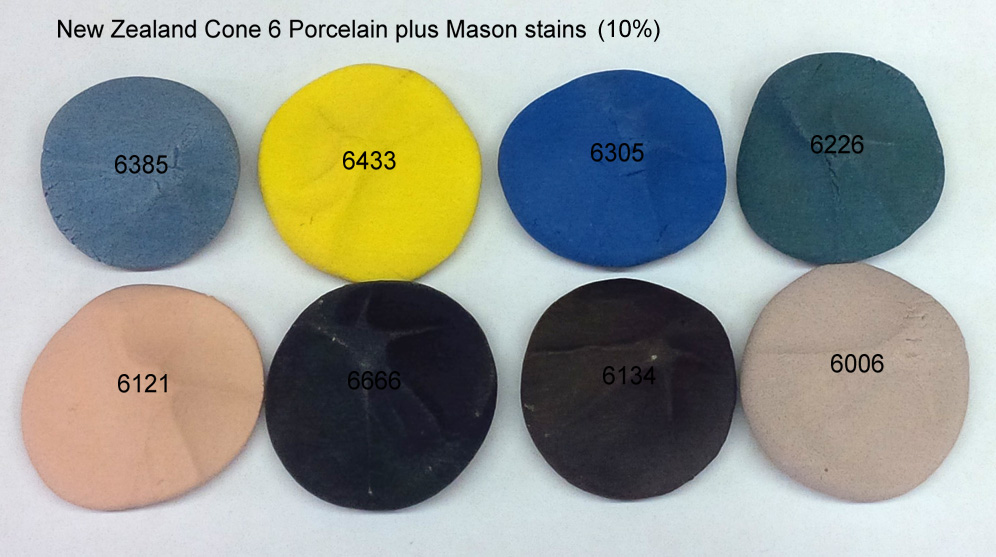Notes
Old number: 85
Related Information
Each Mason stain has its own personality for coloring the body

This picture has its own page with more detail, click here to see it.
These Mason stains make the porcelain more refractory, but some more so (e.g. 6385, 6226). Some do not develop the intended color (e.g. 6006 pink, it is a glaze stain only). Some need a higher concentration (e.g. 6121, 6385). Some need a lower concentration (e.g. 6134). Some do not impart a homogeneous color (e.g. 6385). The data sheets from the stain manufacturer normally make it clear which of their stains are suitable in bodies. But it is up to you to test concentrations needed to get the desired color and what adjustments to the porcelain are needed to compensate its degree of vitrification in response to the effects of the stain.
Links










